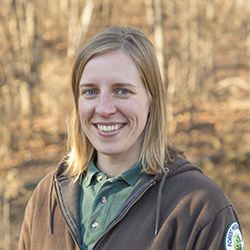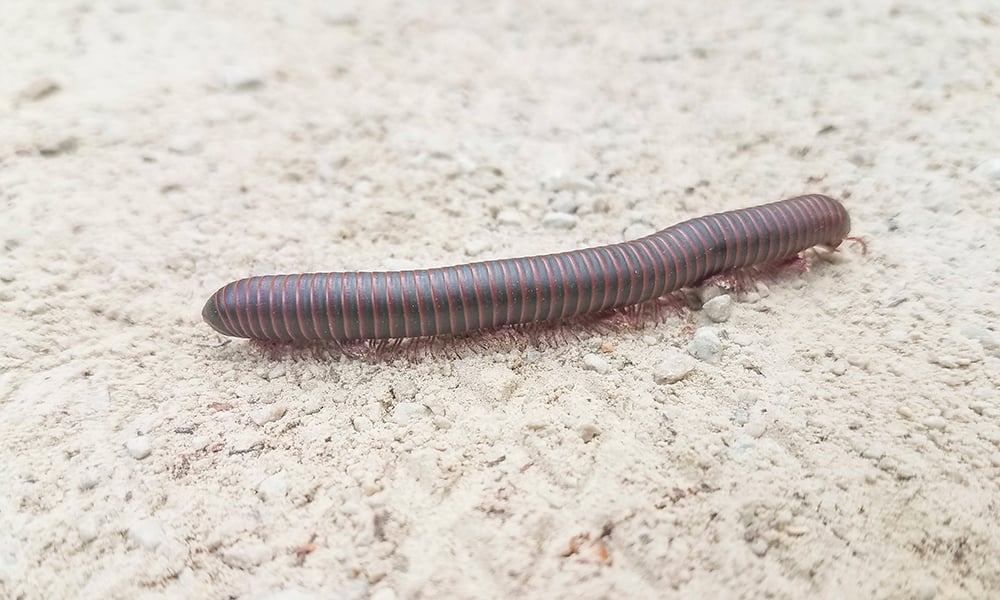
The next time you hit the trails at a DuPage forest preserve, keep an eye out for the North American millipede, Narceus americanus, also called the “iron worm” for its armored appearance.
This large species of millipede, native to the eastern United States, can reach up to 4-inches long. They are dark gray with distinct dark red bands in between each body segment. They have one pair of antennae and chewing mouthparts.
Like insects and spiders, millipedes belong to the phylum Arthropoda. This is where the similarities end, however, as millipedes belong to their own class—the class Diplopoda. Millipedes breathe through spiracles, tiny pore-like holes down the length of their body.
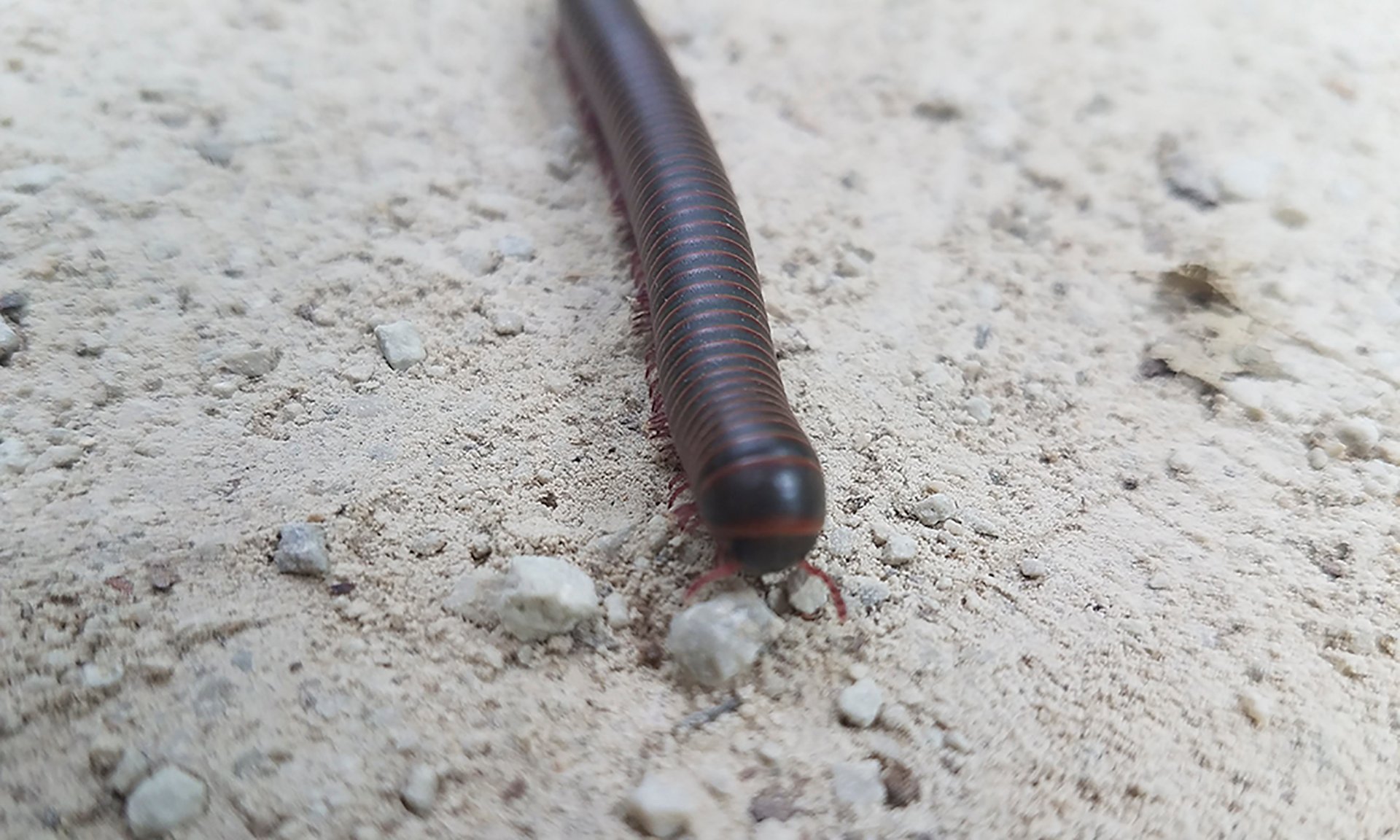
The millipede, sometimes referred to as the iron worm, can grow to 4-inches long.
Lots of Legs
Despite their name “milli” meaning 1,000 and “pede” meaning foot, millipedes do not actually have 1,000 feet. If you look closely, each segment of its long body has two pairs of legs. They have between 80 and 400 pairs of legs, which are designed to help them push their way through soil and vegetative litter.
Their body size is directly related to their age. When a millipede hatches from an egg, it looks like a miniature version of the adult stage. Each time it “molts,” or sheds its old skin, it usually adds another segment to its body with two pairs of legs.
Their sets of legs move one after the other giving them a wave-like appearance in motion as they move forward, backward and sideways or burrow into the ground.
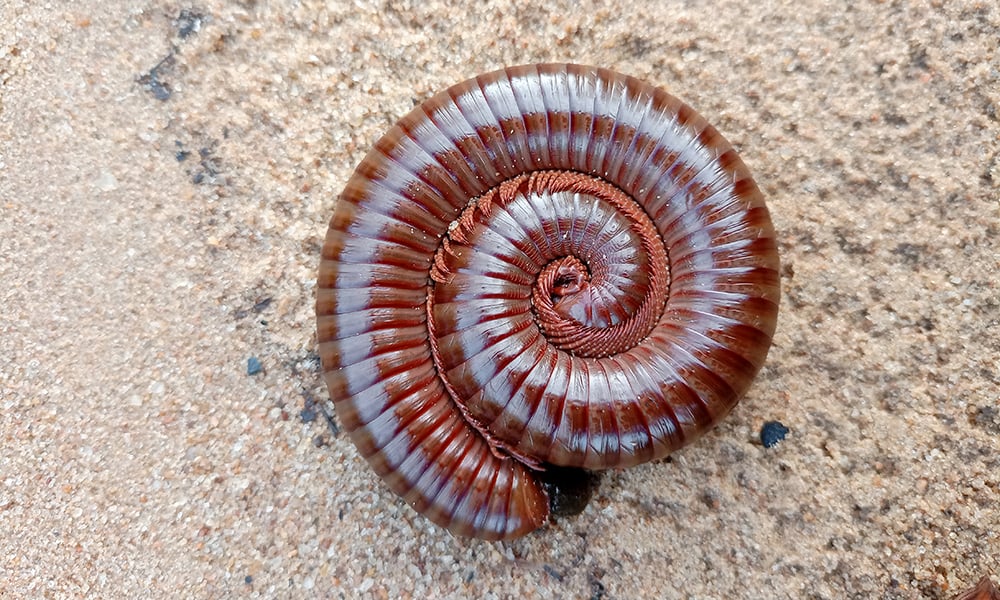
A millipede curled up. Photo courtesy Aimeabibis CC BY-SA 4.0 via Wikimedia Commons.
Millipedes vs. Centipedes
Millipedes have rounded bodies, while centipedes have flat bodies and venomous claws or front legs below their mouths. Unlike centipedes, millipedes lack venom. Centipedes have one pair of legs per segment that point outward, while millipedes have two pairs of legs per segment that point down.
In addition to their tough exoskeleton armor, a millepede’s other defensive moves include curling up its body into a tight spiral and secreting a foul-tasting, bad-smelling liquid when threatened. This liquid can irritate a person’s eyes and skin, so it’s best to observe millipedes without handling them.
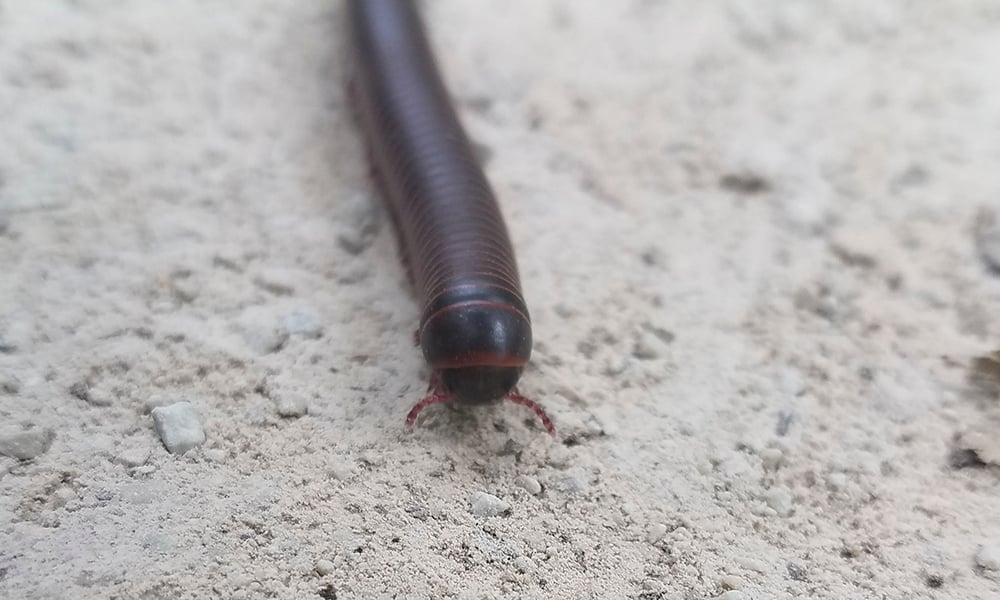
Millipedes have two pairs of legs per segment.
Nature’s Recyclers
Millipedes hibernate in soil and leaf litter over the winter. The adults emerge in spring to mate and lay eggs. A female North American millipede lays a single egg in a cup made from chewed up, regurgitated leaves (Most other millipede species can lay hundreds of eggs at a time.) The female will then protect the egg by curling her body around the nest. The egg hatches into a tiny millipede after several weeks, and it can take 1-2 years to reach adulthood. Some North American millipedes have been recorded to live up to 11 years.
Millipedes prefer old-growth wooded areas where they live in dark, damp areas under logs and rocks. They eat decaying organic material including rotting wood and leaves on the forest floor. This makes them excellent nutrient recyclers along with other forest floor decomposers including beetles, slugs, worms, insects and fungi.
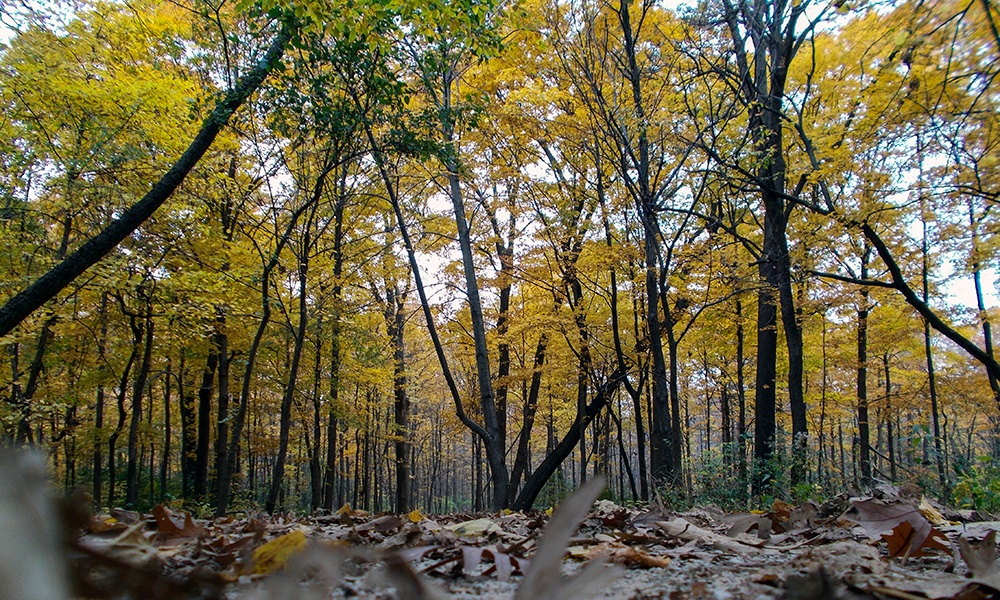
Millipedes prefer to live under logs and rocks in old growth forests.
Millipedes Old as Dirt
There’s fossil evidence that millipedes were the earliest animals to breathe air and make the move from water to land. A fossil found in Scotland, Pneumodesmus newmani, dates back 428 million years and is the oldest fossil specimen with spiracles for breathing air.
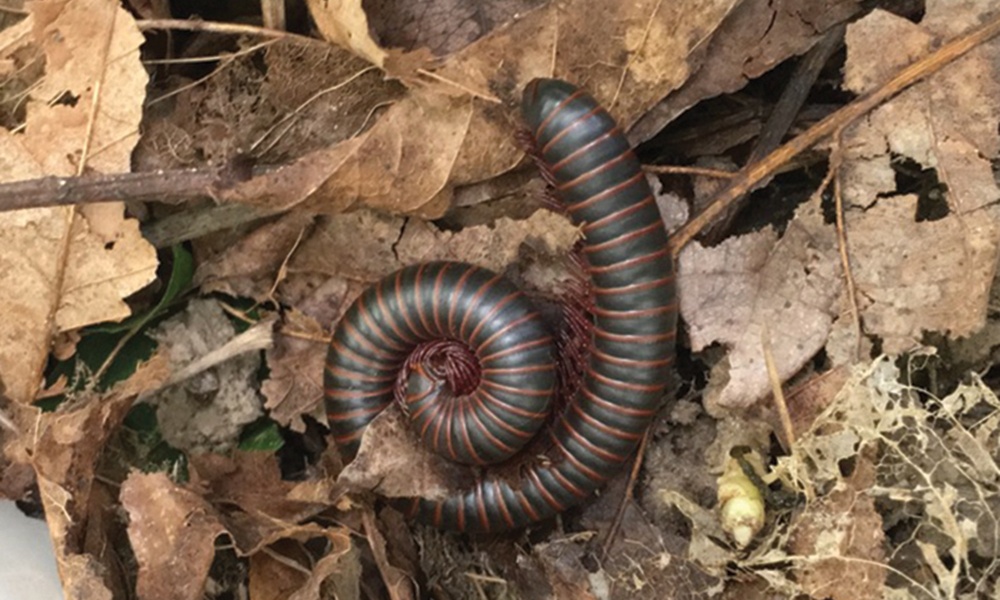
Often mistaken for earthworms, millipedes are big players in plant decomposition. Photo courtesy Leslie Graus.
Jennifer Rydzewski
